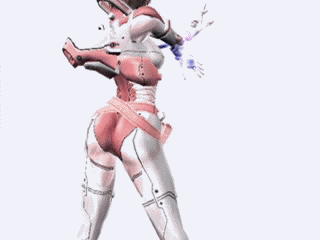So.
Two consecutive Sunday nights at home for the first time since March. And, wouldn’t you know it, I wind up falling annoyingly sick last Thursday. “Annoyingly” in the debilitating sense: unable to concentrate for long periods due to a fogginess in my skull, I found myself stuck in the shitty position where I couldn’t work, couldn’t read, and – more importantly for this blog – couldn’t game. Most such afflictions last three days with me, and this instance was no different; I awoke this Sunday morning with a clearing head, and the drizzly weather outside made me think of only one thing: fishing.
But let’s take a step back.
Prior to falling ill, the week was all about Zelda, and my parallel playthroughs of Ocarina of Time and its close cousin, Master Quest. Progress had been steady on both; most side-quests wrapped up, dungeons falling relatively quickly, referring to a walkthrough for only the most troubling of Gold Skulltalas in Master Quest. I intended to step through the pair dungeon-by-dungeon, but I’d often skip ahead on one, then overshoot on the other, eventually wrapping up the bulk of the reworked rendition a good three dungeons before the original. A bit of catchup, and suddenly all I had left were the problem points, the bits I knew were always going to be a problem: the Hylian Loach. The Gerudo Archery.
And here, if you hadn’t already guessed, is where the title of this post comes in.
I had really suffered over the Gerudo archery challenge when I’d 100%-ed my Collector’s Edition copy of Ocarina; many thousands of Rupees were spent before finally hitting 1560 points, just enough to acquire the Biggest Quiver. This week, though, my first attempt yielded 1430 points. Another four attempts netted a round 1500, a new Quiver, and a raised eyebrow of incredulous disbelief. Sensing a mental zone, I swapped to the other version; this one took thirty-six attempts, but most of those were aborted very soon after acknowledging that I’d buggered up by missing too many pots at the start of the run.
Somehow, my fingers had remembered all that training late last year, twitchy controls be damned. Needless to say, I was pretty bloody happy.
And that brings me to today. Dopey, drizzle… fishing.
I’d blown a huge chunk of time netting my only Hylian Loach. So imagine my surprise when the first one was landed within an hour, with the second taking a tiny bite less.
And there I sat, somewhat hungover with sickness, amazed that everything just seemed to be coming together. Another hour of filling my pockets with Rupees, bombchus, and Deku Seeds, and it was time to tackle Ganondorf… who, along with his über-incarnation, fell in the most emphatic, one-sided battles I’ve ever had against them. One of the Ganon battles didn’t even yield a scratch.
And so, surprisingly, I deem Master Quest to be complete. Sure, there’s a troublesome chest (not containing anything important, probably just a recovery heart) on 3F of the Fire Temple – eastern-most room, southern-most chest – that I can’t figure out, but… Off The List.
Compared to the original, it didn’t feel as complete, as rounded; dungeons didn’t feel as holistic, with enemies sparse in favour of puzzles that verged on the annoyingly obscure. Luckily, my side-by-side playthroughs allowed me the opportunity to experience the original again; and, let’s face it, it’s bloody amazing. And it continues to surprise with all its little details; today, for the first time, I noticed the tinge of sadness in the closing movies, with King Zora and Mido sitting together lamenting the (perceived) losses of their loved ones. And, again, I marveled at the size and completeness of Ocarina‘s world.
And, at the end of the day, this is the third time I’ve 100%-ed Ocarina of Time this year… which makes me a bit sad really. Emotionally sad, sure, because it will likely be my last visit to Hyrule this year; but completing the same game three times in one year? Bit of a worry, that.
